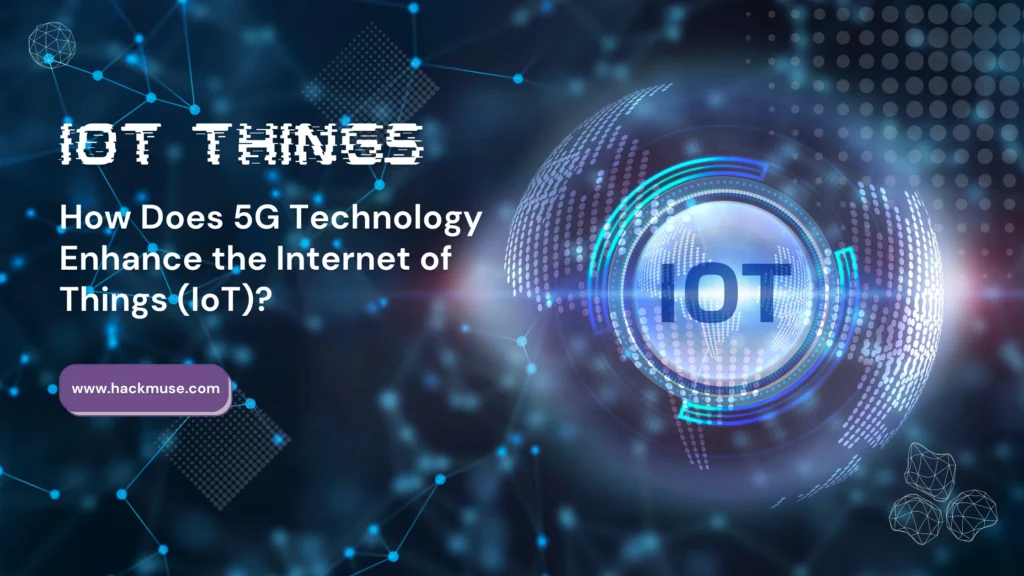The advent of 5G technology marks a significant leap forward in the realm of connectivity, promising to revolutionize not only mobile communication but also the Internet of Things (IoT). This next-generation wireless technology boasts enhanced speed, reduced latency, and the capacity to connect a vast number of devices simultaneously, making it a crucial enabler for the proliferation and advancement of IoT applications. This article explores how 5G technology enhances the IoT landscape, driving innovation and transforming various industries.
Understanding 5G Technology
1. Speed and Bandwidth
5G technology offers unprecedented data transfer speeds, with theoretical maximum download speeds of up to 10 Gbps. This is a hundred times faster than 4G LTE, enabling rapid data exchange between IoT devices and the cloud. The increased bandwidth of 5G allows for more data to be transmitted simultaneously, facilitating the seamless operation of multiple IoT devices without network congestion.
2. Low Latency
Latency, the time it takes for data to travel from the sender to the receiver, is drastically reduced with 5G. While 4G networks typically have a latency of around 50 milliseconds, 5G can achieve latencies as low as 1 millisecond. This near-instantaneous communication is crucial for time-sensitive IoT applications, such as autonomous vehicles, industrial automation, and remote surgery.
3. Massive Device Connectivity
5G technology can support up to one million devices per square kilometer, a significant increase compared to the 4,000 devices per square kilometer supported by 4G. This massive connectivity is essential for the IoT ecosystem, where billions of devices, from smart home appliances to industrial sensors, need to be interconnected and managed efficiently.
Enhancing IoT Applications
1. Smart Cities
5G technology is a key enabler for the development of smart cities, where interconnected devices collect and analyze data to improve urban living. With 5G, smart city applications such as intelligent traffic management, real-time surveillance, waste management, and energy-efficient buildings can operate more efficiently. For instance, smart traffic lights can communicate with each other and with connected vehicles to optimize traffic flow and reduce congestion.
2. Autonomous Vehicles
The low latency and high reliability of 5G are critical for the safe operation of autonomous vehicles. These vehicles rely on real-time data from various sensors, cameras, and communication systems to navigate and make split-second decisions. 5G ensures that data from vehicle-to-vehicle (V2V) and vehicle-to-infrastructure (V2I) communications is transmitted with minimal delay, enhancing the safety and efficiency of autonomous driving.
3. Industrial IoT (IIoT)
In the industrial sector, 5G enables the widespread adoption of IoT technologies, leading to the concept of Industry 4.0. Factories and manufacturing plants can leverage 5G to connect machines, robots, and sensors, facilitating real-time monitoring and control. This results in increased operational efficiency, predictive maintenance, and reduced downtime. For example, in a smart factory, 5G-connected sensors can detect equipment malfunctions and trigger maintenance protocols before a breakdown occurs.
4. Healthcare
The healthcare industry stands to benefit immensely from the integration of 5G and IoT. Remote patient monitoring, telemedicine, and wearable health devices become more effective with the high-speed, low-latency connectivity of 5G. Medical devices can transmit real-time data to healthcare providers, enabling timely interventions and personalized care. In critical situations, 5G can support remote surgeries, where specialists can operate on patients from different locations using robotic systems.
5. Smart Homes
5G enhances the functionality of smart home devices, creating a more connected and automated living environment. Smart thermostats, security cameras, lighting systems, and appliances can communicate seamlessly, offering improved convenience, energy efficiency, and security. For instance, a 5G-enabled smart home system can learn the homeowner’s preferences and adjust settings automatically, creating a personalized and comfortable living space.
Overcoming Challenges
While the benefits of 5G for IoT are substantial, there are challenges that need to be addressed to fully realize its potential.
1. Infrastructure Development
The deployment of 5G requires significant infrastructure investment, including the installation of small cells, base stations, and fiber optic cables. Ensuring widespread coverage, particularly in rural and remote areas, is crucial for the universal adoption of 5G-enabled IoT solutions.
2. Security Concerns
With the increased connectivity and data exchange facilitated by 5G, security becomes a paramount concern. IoT devices are often vulnerable to cyberattacks, and the integration of 5G introduces new attack vectors. Robust security measures, including encryption, authentication, and network slicing, are essential to protect IoT networks from potential threats.
3. Interoperability
The IoT ecosystem comprises a wide range of devices and platforms from different manufacturers. Ensuring interoperability between these diverse components is vital for seamless communication and data exchange. Standardization efforts and open protocols can help achieve this interoperability, fostering a cohesive and efficient IoT environment.
4. Energy Consumption
While 5G offers enhanced performance, it also increases energy consumption, particularly for IoT devices that rely on battery power. Developing energy-efficient hardware and optimizing communication protocols are necessary to prolong the battery life of IoT devices and reduce the overall environmental impact.
The Future of 5G and IoT
The synergy between 5G and IoT holds immense promise for the future, driving innovation and transforming various industries. As 5G networks continue to expand and mature, we can expect to see a proliferation of new IoT applications and services that were previously unimaginable.
1. Enhanced User Experiences
Consumers will experience more immersive and interactive experiences, from augmented reality (AR) and virtual reality (VR) applications to smart retail and entertainment. 5G-enabled IoT devices will deliver personalized and context-aware services, enhancing convenience and satisfaction.
2. Sustainable Development
5G and IoT can contribute to sustainable development by enabling smarter resource management and reducing waste. For example, smart grids can optimize energy distribution, while precision agriculture can improve crop yields and reduce environmental impact. These technologies can play a vital role in addressing global challenges such as climate change and resource scarcity.
3. Economic Growth
The widespread adoption of 5G and IoT is expected to drive economic growth by creating new business opportunities and improving productivity across various sectors. Industries such as manufacturing, healthcare, transportation, and agriculture will benefit from increased efficiency and innovation, leading to job creation and economic development.
Conclusion
5G technology is a game-changer for the Internet of Things, providing the necessary infrastructure for enhanced connectivity, speed, and reliability. As 5G networks continue to roll out globally, the potential for IoT applications will expand, driving innovation and transforming industries. From smart cities and autonomous vehicles to healthcare and smart homes, the integration of 5G and IoT promises to create a more connected, efficient, and sustainable world. While challenges remain, the future of 5G and IoT is bright, with the potential to revolutionize the way we live and work.







